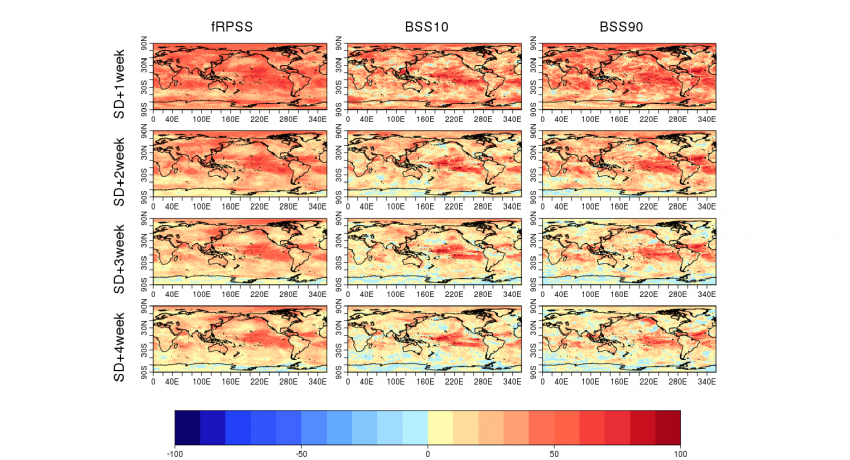The subseasonal forecasts available on the DST are now based on the ECMWF extended-range system.
A new version of the S2S4E Decision Support Tool (DST v1.4.0; https://s2s4e-dst.bsc.es/), a tool providing subseasonal-to-seasonal forecasts aimed at the energy sector, was released in April 2020.
Now, the subseasonal predictions available on the DST are based on the ECMWF extended-range forecast system, switching from the NCEP CFSv2 system that was previously used.
The ECMWF-Ext-ENS predictions have been provided to S2S4E in the context of the S2S real-time pilot initiative of the S2S Prediction Project. This initiative aims to bring the scientific research in S2S closer to operational and application uses, and to assess the added value of S2S predictions in various sectors.
In addition, this change will ensure the consistency of forecasts and a smoother transition across the different time periods, since both subseasonal and seasonal predictions are now provided by the same operational center.
More information about the subseasonal forecasts can be found in the Advanced Information page of the DST.
The article figure shows the skill scores for probabilistic forecast of temperature tercile categories (fair RPSS), and for probabilistic forecasts of low extreme temperatures (BSS10) and high extreme temperatures (BSS90). Four forecast times are shown (1-4 weeks ahead), based on ECMWF subseasonal forecasts run on the 16th of April 2020.
Written by Andria Nicodemou (BSC).


